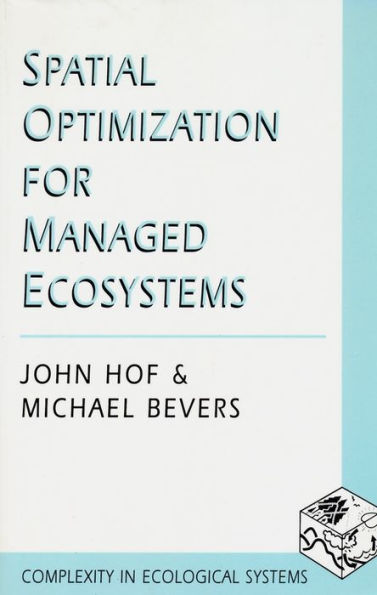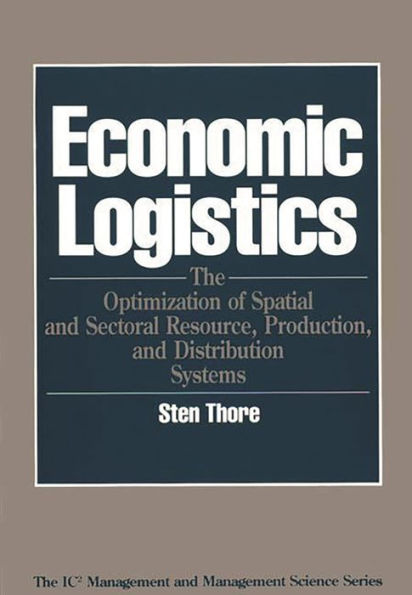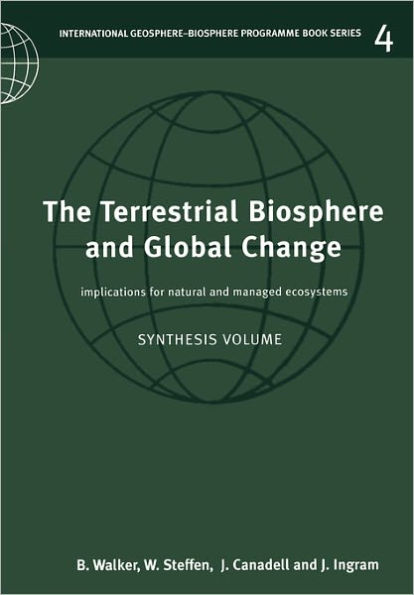Home
Spatial Optimization for Managed Ecosystems
Barnes and Noble
Loading Inventory...
Spatial Optimization for Managed Ecosystems
Current price: $150.00

Barnes and Noble
Spatial Optimization for Managed Ecosystems
Current price: $150.00
Loading Inventory...
Size: OS
*Product information may vary - to confirm product availability, pricing, shipping and return information please contact Barnes and Noble
Spatial optimization is a methodology used to maximize or minimize a management objective, given the limited area, finite resources, and spatial relationships in an ecosystem. Optimization approaches can be used to evaluate a great variety of options and allow tradeoff analyses that might be impossible with other methods.
This book presents ideas and methods for directly optimizing the spatial layout of the landscape features in which an ecosystem functions. The problems Hof and Bevers address are complex, and the book relies heavily on mathematical presentations; the ideas are explained in a tutorial fashion that allows readers to grasp the general principals even if they skip the math. The first of four parts treats static spatial relationships that reflect the importance of shape, size, and proximity within an ecosystem. Part 2 considers spatial autocorrelation in a chance-constrained modeling framework. Part 3 discusses dynamic spatial changes within modeled ecosystems, and the final section focuses on diversity and sustainability. Although most discussion concerns wildlife habitat issues, the authors also include chapters on recreation, timber management, water runoff, and pest management.
This book presents ideas and methods for directly optimizing the spatial layout of the landscape features in which an ecosystem functions. The problems Hof and Bevers address are complex, and the book relies heavily on mathematical presentations; the ideas are explained in a tutorial fashion that allows readers to grasp the general principals even if they skip the math. The first of four parts treats static spatial relationships that reflect the importance of shape, size, and proximity within an ecosystem. Part 2 considers spatial autocorrelation in a chance-constrained modeling framework. Part 3 discusses dynamic spatial changes within modeled ecosystems, and the final section focuses on diversity and sustainability. Although most discussion concerns wildlife habitat issues, the authors also include chapters on recreation, timber management, water runoff, and pest management.
Spatial optimization is a methodology used to maximize or minimize a management objective, given the limited area, finite resources, and spatial relationships in an ecosystem. Optimization approaches can be used to evaluate a great variety of options and allow tradeoff analyses that might be impossible with other methods.
This book presents ideas and methods for directly optimizing the spatial layout of the landscape features in which an ecosystem functions. The problems Hof and Bevers address are complex, and the book relies heavily on mathematical presentations; the ideas are explained in a tutorial fashion that allows readers to grasp the general principals even if they skip the math. The first of four parts treats static spatial relationships that reflect the importance of shape, size, and proximity within an ecosystem. Part 2 considers spatial autocorrelation in a chance-constrained modeling framework. Part 3 discusses dynamic spatial changes within modeled ecosystems, and the final section focuses on diversity and sustainability. Although most discussion concerns wildlife habitat issues, the authors also include chapters on recreation, timber management, water runoff, and pest management.
This book presents ideas and methods for directly optimizing the spatial layout of the landscape features in which an ecosystem functions. The problems Hof and Bevers address are complex, and the book relies heavily on mathematical presentations; the ideas are explained in a tutorial fashion that allows readers to grasp the general principals even if they skip the math. The first of four parts treats static spatial relationships that reflect the importance of shape, size, and proximity within an ecosystem. Part 2 considers spatial autocorrelation in a chance-constrained modeling framework. Part 3 discusses dynamic spatial changes within modeled ecosystems, and the final section focuses on diversity and sustainability. Although most discussion concerns wildlife habitat issues, the authors also include chapters on recreation, timber management, water runoff, and pest management.

















